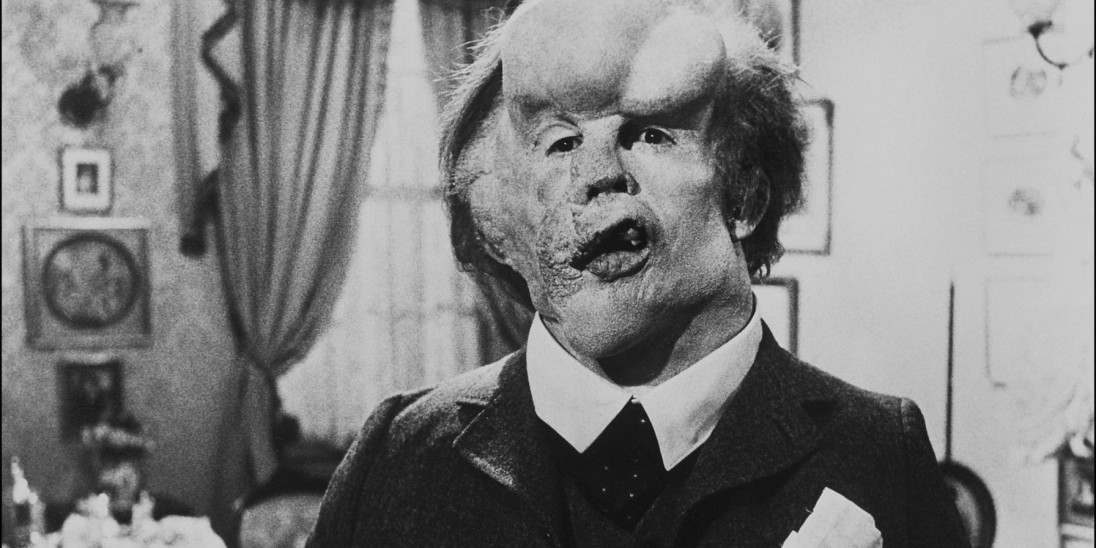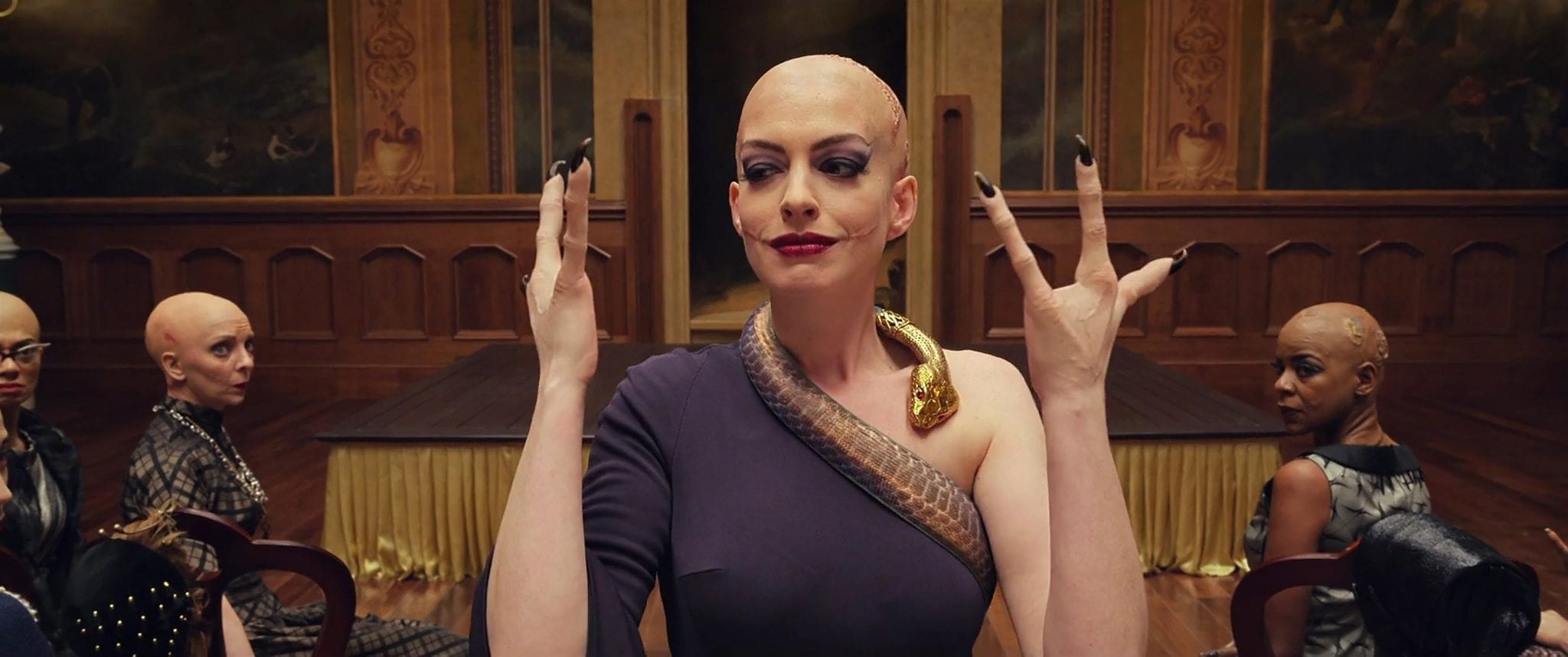Last week, The Witches was released to cries of disdain. Accusations flew in that the film fuelled stigmas surrounding disabilities and physical deformities or differences. A petition to boycott the film has already received thousands of signatures. Even Anne Hathaway – who plays The Grand High Witch – made a public apology on her Facebook page. This is not, however, a recent phenomenon. The Witches is just the latest film that slides towards the tired device of using a physical difference or disability to communicate evil or otherness.
The poisonous idea that physical differences or disabilities are somehow indicative of status, personality or moral inclination has been around for centuries. Furthermore, this difference is employed not just as an identifying marker, but as a source of entertainment and/or education for the privileged and able-bodied. In Ancient Rome, Emperor Augustus would often place disabled individuals on display or force them to entertain him. He made sure the Roman people knew that he looked down on people so different to himself.
During the Salem Witch Trials, disability was seen as representing disloyalty to god – physical perfection was a pertinent Puritan ideal. During the colonial era, Eugenics – which you could call a very different pseudoscience – was used to associate disabled individuals with a whole host of social problems for large parts of the 19th and 20th centuries. The history of physical disability is full of examples where it has been unfairly used as an indication of character, purity or human worth.
It is a trend found in culture as well – yes in the early days of cinema but going back at least as far as the days of Shakespeare. In Macbeth, the witches are signified by their haggard appearances and physical imperfections (although more contemporary interpretations tend to shirk this element). The idea of the witch, in particular, has been used as an unfair mode of characterisation for decades. Far too often, these tropes are to be found in real-life prejudices. Arts, culture and media have allowed physical difference to become a benchmark for a characterisation that unfairly demonises those deemed to deviate from the physical norm. The literary history of witchcraft and evil being linked to deformity is so well documented, that it is deeply saddening to see such a trope continuing to be used.

Disability in film fits into this larger pattern. In some cases, negative stereotypes fuel the design of characters you see on screen. In others, the reverse is true. The way certain characters are portrayed feeds negative stereotypes of physical conditions and impairments that films may not even be addressing directly. Sometimes the disabled ‘other’ would be portrayed as having an insatiable lust for others that possess physically perfect bodies, such as Frankenstein’s Monster in Bride of Frankenstein or the Nazi Dwarf in The Black Bird.
For films in the 1960s such as Dr. No or Dr. Strangelove, physical deformity is used to communicate the deformation of the soul or a lack of recognisable humanity. Sadly, this is a characterisation that unfortunately remains commonplace. In The Elephant Man, only death can release John Hurt’s disabled protagonist from the endless struggles he faces.
These all represent trends identified by disability activist Paul Longmore. Frequently, disabled people are seen as a threat to the normative, able-bodied majority. When they are not longing for their own death, they are normally portrayed as dangerous, vengeful or ungodly. Think Darth Maul in Star Wars: The Clone Wars, for an example from the world of television. It’s an insidious, unforgivable curse on the movies, one that they should have lifted long before now.
It is for this reason that The Witches has caused such uproar. Witches are, certainly in the common way of thinking and in the descriptions laid down by Roald Dahl, evil. Here, this evilness is coupled with a physical decrepitness. That said, Dahl did not go as far as the film has, instead leaving some room for ambiguity and interpretation. It feeds even further into the idea that those with physical disabilities, especially those with clear visual markers, are somehow inherently bad and in need of controlling by the normally able-bodied protagonists.

Hathaway’s character in particular, with her three-fingered hands, connotes a particular condition known as Ectrodactyly. It is also no accident that the main characters of The Witches are children. Young people approaching their physical prime, with a youthfulness and contrasting purity will, of course, destroy the wicked souls of those who are old and deemed too dissimilar in both body and spirit.
Other recent films tug at the controversy in different ways. The Greatest Showman sees Hugh Jackman’s character P.T. Barnum assemble a crew of performers for his circus, several of whom exhibit physical abnormalities or disabilities (excessive body hair, dwarfism and so on). In reality, Barnum’s first circus also contained individuals who had additional limbs, microcephaly and suspected muscle atrophy. Much like Augustus centuries before him, Barnum’s only real interest was in exploiting disabled individuals for entertainment purposes. Never mind what the feel-good musical might tell you. The Greatest Showman is, if anything, an insult to the struggles faced by the disabled population. It’s a film that merely touches on the difficulties they face. All the while, it misleadingly suggests that Barnum was some great emancipator fuelled by charity and acceptance.

That being said, it would be unfair to claim that all films contain poor representations of physical difference or disability. In Jacques Audiard’s Rust and Bone, Marion Cotillard’s character loses her legs in a tragic accident. However, the film actually portrays this as something that allows her to feel freer and meaningfully connect with others. In The Peanut Butter Falcon, a film about a man with Down’s Syndrome who dreams of becoming a professional wrestler, the lead actor is Zack Gottsagen, who himself has Down’s. It is a stark contrast to the ‘better off dead’ messaging found in films such as The Elephant Man or more recently in Me Before You. Disabled characters deserve the depth, attention and drive of their able-bodied peers. Representations of disability in cinema, both physical and other, has improved but continues to fall short.
The Witches sadly follows the trend when it comes to representations of disability instead of bucking it. If Hollywood is to undo an injustice that goes back long before even the invention of the motion picture itself, it will have to do much better. The solution is not in disability erasure, nor is it in casting disabled actors solely as disabled characters. It is thinking critically about the imagery, representation and characterisation of characters with physical deformities, as well as who is portraying them and how the character develops over the course of the film. Hathaway’s apology makes it abundantly clear that this did not happen with The Witches. Filmmakers need to consider their characters through a historical, contextual and empathetic lens, while audiences should also be educated so that they may spot poor representations when one – sadly, and inevitably – makes its way to cinemas again.
Written by James Hanton.
Support The Indiependent
We’re trying to raise £200 a month to help cover our operational costs. This includes our ‘Writer of the Month’ awards, where we recognise the amazing work produced by our contributor team. If you’ve enjoyed reading our site, we’d really appreciate it if you could donate to The Indiependent. Whether you can give £1 or £10, you’d be making a huge difference to our small team.
